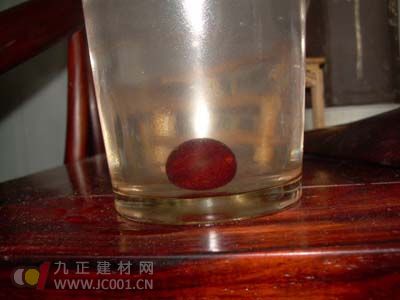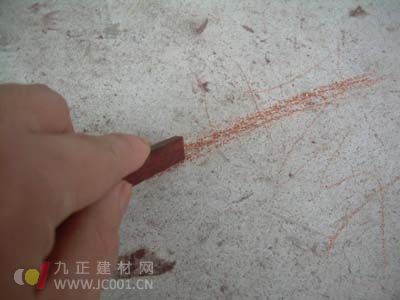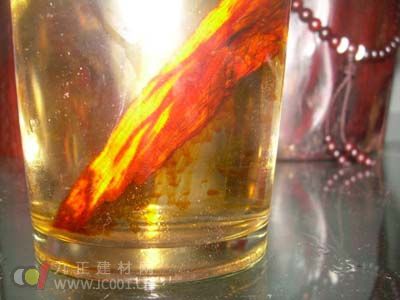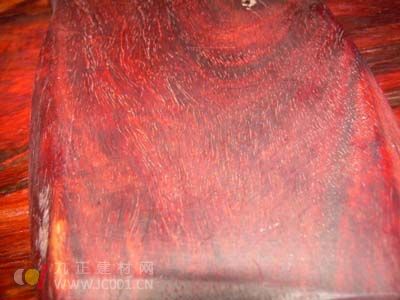Indian lobular rosewood, also known as sandalwood rosewood, was one of the primary materials used in the furniture of the Ming and Qing dynasties in China. This gives it a deep historical and cultural significance. By the middle of the Qing Dynasty, this rare wood became a symbol of status, mainly owned by nobles and royalty. Additionally, its origin is not native to China, which adds to its mysterious allure. In recent years, with the global surge in collecting, red sandalwood has become highly sought after, leading to an influx of such materials into the domestic market. It's now commonly used by the public for making bracelets, handles, ornaments, and even furniture. Today, the market is flooded with various types of wood, such as big-leaf red sandalwood, small-leaf red sandalwood, and African lobular rosewood. However, only one type is considered true red sandalwood—scientifically known as *Santalum album*, commonly called "lobular rosewood." It’s valued not just for its beauty but also for its medicinal properties. The best quality comes from southern India, where it exhibits the most vibrant color and finest texture. With so many similar woods and confusing names, how can you tell real red sandalwood from the rest? The images below show some of the red sandalwood samples I've collected over time. These small pieces are all visually similar, but they come from different regions and have distinct textures. Identifying genuine red sandalwood requires attention to detail and a good understanding of its unique characteristics. Here is a step-by-step guide to help you identify Indian lobular rosewood: 1. Red sandalwood is denser than water. If it sinks completely, it's a good sign. If it floats, it's likely not real. 2. Rub a piece of wood on white paper. If it's sandalwood rosewood, it will leave an orange mark. 3. Soak wood chips in water for about 12 hours. If there's a blue oil-like fluorescence on the surface, it's a strong indicator of real red sandalwood. This test helps eliminate other rosewood varieties like *Pterocarpus indicus* or *Dalbergia chinensis*. If fluorescence appears, proceed to the next step. 4. After soaking, observe the color of the wood chips. Real red sandalwood should show a blue fluorescent glow. The intensity of the fluorescence depends on the source and soaking time. If not visible, move on to the next step. 5. Place the wood in a container filled with alcohol. If it's red sandalwood, it will release a reddish resin. 6. Examine the growth rings on the cross-section. Red sandalwood typically has very subtle or no visible growth rings. If unsure, continue to the next method. 7. Check the color. Fresh cuts of red sandalwood appear orange-red, while older sections turn dark purple or deep red, often with black streaks running through them. 8. Smell the wood. When rubbed, it emits a faint, sweet scent—similar to sandalwood, but much milder than the strong aroma of burning incense. This scent becomes more noticeable when using tools like a saw or chisel. 9. Observe the grain. Genuine red sandalwood has a distinctive, staggered texture with occasional curling patterns resembling cow hair. 10. Look for an oily sheen. True red sandalwood has a naturally oily surface that feels smooth to the touch. 11. Use a magnifying glass (at least 30x) to examine the cross-section. This is the final and most detailed step. Compare the features with the national standard “Redwood†description. If the characteristics match, it's likely real red sandalwood. If not, it's probably not. Note: This method is especially useful for beginners or those unfamiliar with red sandalwood. Experts can usually identify it by looking at key traits like fluorescence, scratch marks, and water density. However, the combination of color, texture, brown eyes, and oiliness is the most reliable way to confirm authenticity. Note: Out of over 20,000 wood species worldwide, only three types are known to exhibit fluorescence, leave scratch marks, and sink in water. These include true red sandalwood, more broccoli (a type of fake), and dyed rosewood. The methods described above have been tested in real-world situations and work effectively regardless of whether the material is old or new, untreated or treated. They can detect even the most sophisticated fakes. If the wood has been stained or painted, you’ll need to remove the surface layer before testing. Sample Transport Tube,Transport Tube With Screw Cap,freezer storage rack,upright freezer shelves Taizhou TOPAID Medical Device Co,,ltd , https://www.topaidgen.com




